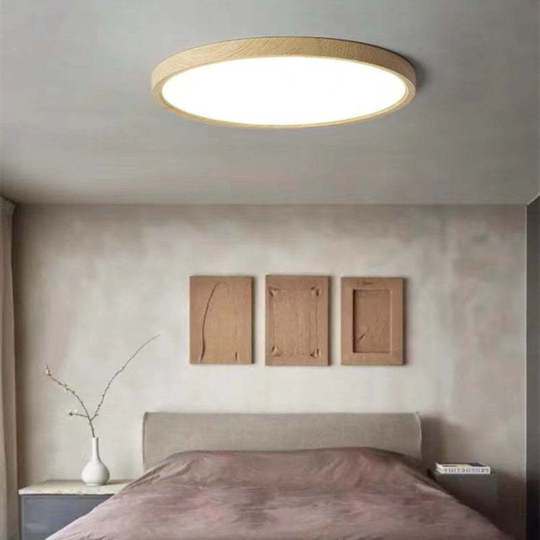Transform Your Bedroom into a Dreamy Oasis with These Lighting Secrets!
Lighting plays a pivotal role in establishing the mood of any room, and the bedroom lights is no exception. The right bedroom lights can completely transform your space into a soothing oasis where relaxation reigns supreme. From creating a soft, calming glow for winding down after a long day to providing bright light for reading your favorite book, selecting the appropriate lighting fixtures can enhance both comfort and style. Imagine coming home to a warmly lit sanctuary, inviting you to unwind and rejuvenate. In this article, we will explore how to choose the perfect lighting options to elevate your bedroom into a dreamy retreat.

Understanding the Importance of Bedroom Lighting
The first step in crafting a tranquil bedroom environment is understanding the different functions of lighting: ambient, task, and accent. Ambient lighting serves as the general illumination of the room, creating a warm and inviting atmosphere. This is often achieved through ceiling lights or overhead fixtures that cast a soft glow throughout the space. Task lighting, on the other hand, is designed for specific activities—think reading lamps placed on bedside tables or desk lamps for late-night studying. Lastly, accent lighting adds depth and drama to your bedroom, highlighting artwork or architectural features with wall sconces or decorative fixtures. Each type of lighting plays a vital role in enhancing the overall ambiance, making it essential to incorporate a balanced mix in your design.
Types of Bedroom Lighting Fixtures
When it comes to bedroom lighting fixtures, the options are plentiful. Ceiling lights are a staple for providing ambient light, available in a range of styles from sleek modern designs to ornate chandeliers that can serve as statement pieces. Bedside lamps are practical yet stylish, offering the perfect solution for task lighting while adding a touch of personality to your nightstands. Wall sconces are another versatile option, providing both ambient and accent lighting; they can be mounted beside the bed for easy access or used to illuminate artwork on the walls. For a more whimsical touch, string lights can create a cozy atmosphere, perfect for those who want to add a hint of enchantment to their space. Each fixture brings unique features and benefits, allowing you to customize your bedroom lighting to suit your individual taste.
Layering Your Lighting
Layering lighting is key to achieving a well-rounded and inviting atmosphere in your bedroom. The concept revolves around combining different types of lighting fixtures to create depth and versatility in your space. Start with ambient lighting as your base, then introduce task lighting in areas where you need focused illumination, such as beside the bed or at a reading nook. Finally, add accent lighting to draw attention to specific elements, like artwork or shelves. Layering not only enhances the visual appeal of your room but also allows you to adjust the lighting according to different activities—whether you’re winding down for the night or hosting friends for a cozy evening in.
Choosing the Right Color Temperature
Color temperature is an often-overlooked aspect of bedroom lighting that can significantly impact your mood and relaxation. Lights are typically categorized into warm and cool tones, measured in Kelvins (K). Warm light, usually around 2700K to 3000K, emits a cozy glow that encourages relaxation and comfort—perfect for a bedroom setting. In contrast, cooler light, ranging from 4000K to 5000K, provides a brighter and more energizing ambiance, which might be preferable for functional spaces like home offices. Being mindful of the color temperature of your lighting choices can help create a serene environment conducive to restful sleep.
Incorporating Smart Lighting Solutions
As technology continues to evolve, smart lighting solutions are becoming increasingly popular in bedroom design. These innovative systems offer adjustable brightness and color options, allowing you to customize your lighting experience at the touch of a button. Imagine being able to dim the lights as you prepare for sleep or change the color to a soft blue for a calming effect before bed. Smart lighting can also be programmed to follow your daily routine, ensuring your bedroom remains a tranquil oasis tailored to your lifestyle. With such versatility, it’s no wonder that more homeowners are integrating smart lighting into their bedroom spaces.
Creating Your Ideal Bedroom Lighting
In summary, selecting the right bedroom lights is essential for transforming your space into a dreamy oasis. By understanding the importance of different lighting functions, exploring various types of fixtures, layering your lighting, choosing the appropriate color temperature, and incorporating smart lighting solutions, you can create a bedroom that is not only beautiful but also functional. Take the time to explore your options and discover what styles resonate with you—after all, your bedroom should be a reflection of your personal sanctuary, inviting you to relax and recharge.










Comments